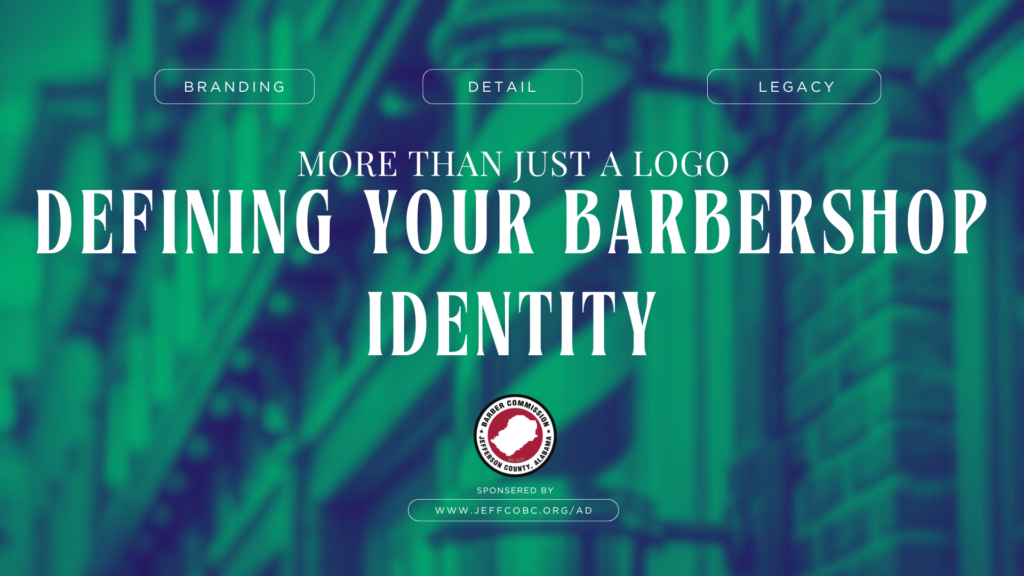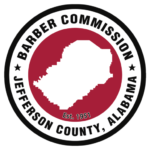
Estimated Read Time: 10 to 12 minutes.
A brand identity is not just a name, a logo, or a tagline—it’s the complete package of how a business presents itself to the world and how people perceive it in return. From the moment a client walks through your doors to the experience they have in your chair and the impression they leave with, everything about your barbershop contributes to its identity. But what does that really mean?
Think about the biggest, most recognizable brands in the world. The Apple logo, the Nike swoosh, the golden arches of McDonald’s—these symbols are burned into our brains, not just because they exist, but because they’ve been carefully crafted into a broader brand identity. The moment you see them, you know exactly what they stand for.
Your barbershop may not be a global brand, but that doesn’t mean your identity is any less important. In fact, in an industry where trust, consistency, and reputation are everything, establishing a strong brand identity is one of the most powerful tools at your disposal.It shapes how clients perceive you, builds loyalty, and helps your business stand out in a crowded market.
So how do you define your shop’s identity in a way that’s unique, authentic, and lasting? It starts with understanding who you are, what you represent, and how you want your clients to feel every time they interact with your brand.
Understanding Brand Identity: What Does It Really Mean?
Brand identity is the combination of tangible and intangible elements that define a business. It’s the visual components like your logo, shop design, and color scheme, but it’s also the deeper aspects like your values, reputation, and the way you interact with your customers. A strong brand identity means that when people think of your barbershop, they don’t just think of a place to get a haircut—they think of an experience, a culture, and a feeling.
The most successful brands—both big and small—have identities that are clear, intentional, and instantly recognizable. Walk into a premium barbershop with sleek, minimalistic decor, smooth jazz playing in the background, and expert barbers dressed in tailored aprons, and you immediately get a sense of luxury and professionalism. Step into a neighborhood barbershop with graffiti-style artwork, hip-hop blasting, and a community vibe, and you feel an entirely different energy. Neither is better than the other—it all comes down to the identity that’s been created and how well it resonates with the intended audience.
Your barbershop’s identity should be just as distinctive. If a new client were to walk into your shop today, would they immediately understand what you’re about? Would they get a sense of your brand’s personality, culture, and values? If not, it’s time to define it.
Laying the Foundation for Your Barbershop’s Identity
Establishing a brand identity isn’t about picking random elements that look good together—it’s about building a foundation that reflects your vision and resonates with your audience. The key is to start from the ground up, making sure every decision aligns with who you are as a barber and what you want your shop to represent.
The first step in defining your identity is knowing your audience. You need to have a clear understanding of who your target customers are, what they value, and what kind of experience they’re looking for. Are you catering to professionals who want a premium, high-end grooming experience? Are you focused on a younger, streetwear-inspired clientele who appreciate a modern, urban vibe? Are you the go-to spot for classic, old-school cuts with a vintage barbershop aesthetic?
Once you know your audience, it’s time to define your position in the market. Assess what makes your shop different from others in your area. What do you offer that competitors don’t? What’s your unique selling point? If you’re simply blending in with every other barbershop on the block, you’re missing an opportunity to carve out a strong, recognizable identity.
Establishing Your Shop’s Core Values and Mission
A strong brand identity is built on a foundation of clear values, purpose, and vision. It’s not just about how your shop looks—it’s about what it stands for. Think about why you started your barbershop in the first place. Was it to create a space where men could not only get a great cut but also build confidence? Was it to foster a sense of community and belonging? Was it to push the boundaries of grooming trends and set new industry standards?
Your brand identity should reflect these core values in everything you do. If your shop is all about craftsmanship and high-end grooming, your services, pricing, and shop environment should align with that. If your mission is to provide an inclusive, welcoming space for all clients, your marketing, social media presence, and customer interactions should reinforce that message.
Seeing Your Brand Through Your Clients’ Eyes
One of the biggest mistakes barbers make when developing their brand identity is failing to see their business from the customer’s perspective. While you might have a clear vision in your head, what really matters is how your brand is perceived by the people who walk through your doors.
Take a step back and put yourself in the client’s shoes. If someone were to visit your barbershop for the first time, what would they notice? How would they feel? What would they tell their friends about the experience?
Gather honest feedback from clients, employees, and even friends. Ask them about their impressions of your shop’s vibe, customer service, and overall atmosphere. Are you successfully communicating what you want people to associate with your brand, or is there a disconnect? If the feedback doesn’t align with your vision, it’s time to make adjustments.
Bringing Your Brand Identity to Life
Once you’ve defined your values, audience, and mission, it’s time to bring your brand identity to life in a way that’s cohesive, engaging, and memorable. This means ensuring that every visual and experiential element of your shop reflects the identity you’ve worked so hard to create.
Your shop’s aesthetic—from the layout and decor to the music and lighting—should reinforce your brand’s personality. If you’re aiming for a sleek, modern image, clean lines, muted tones, and minimalist design choices should be at the forefront. If you’re creating a vintage, old-school feel, rich woods, classic barber chairs, and nostalgic artwork will help solidify that theme.
Your logo, typography, and color scheme should be consistent across all platforms, from your website to your social media pages and business cards. A cohesive visual identity helps clients recognize and remember your brand, whether they’re visiting your shop or scrolling past one of your Instagram posts.
Your brand identity also extends beyond aesthetics. The way you and your team interact with clients, the language you use in your marketing, the promotions you run—all of these elements should be carefully curated to fit your brand’s voice and messaging.
Final Thoughts: Building an Identity That Lasts
A strong barbershop identity doesn’t happen by accident—it’s the result of intentional choices, strategic branding, and a deep understanding of what makes your business unique. Your brand isn’t just about how your shop looks—it’s about the emotions and experiences it creates for every client who walks in.
If you haven’t clearly defined your shop’s identity yet, now is the time to start. Figure out what you stand for, refine your message, and make sure every element of your business aligns with that vision. When done right, your brand identity won’t just make your shop more recognizable—it will make it unforgettable.


